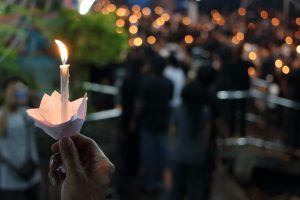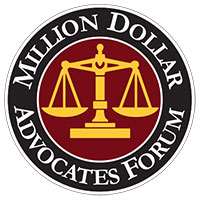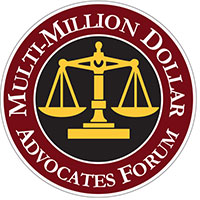Burbank Wrongful Death Lawyer
Losing a loved one is always tragic. However, it is even more devastating when that person is taken from you through the negligence of another. The responsible party of the tragedy should be held liable. Any person who has had a loved one taken by wrongful death should contact a personal injury attorney to file a claim.
We understand how traumatic this type of loss can be, and how difficult it is for a family to move forward after the death of a loved one. Monetary compensation for the wrongdoing can never completely heal this wound, however, it will help keep liable parties legally responsible.
If you or someone you know has lost someone due to wrongful death, it is in your best interest to contact a Burbank wrongful death lawyer.

Lawyer for Wrongful Death Claims Burbank, CA
The wrongful death of a loved one can affect the entire family. Holding someone, a company, a person, or an entity responsible for their carelessness helps deter future acts of negligence and manage your financial future. If you have experienced a wrongful death, we urge you to contact a wrongful death attorney at Yarian & Associates, APC.
The Burbank attorneys at Yarian & Associates, APC are passionate about advocating for your loved one. We understand that your case is not only important to your family, but to the general public’s safety. Yarian & Associates, APC has procured millions of dollars in wrongful death settlements in prior cases.
Have some peace of mind today. Dial (844)291-1911 to schedule a free consultation with an attorney at Yarian & Associates, APC today.
Overview of Wrongful Death Claims in California
How Do You Prove Wrongful Death?
California law specifically lists those who may file a cause of action for wrongful death. In each case, the suit may be filed by the person himself or by the decedent’s personal representative on behalf of the family member or heir.
Those who may assert claims for wrongful death include:
- The deceased’s surviving spouse or domestic partner
- A child or children of the deceased
- If the decedent was predeceased by a child, that child’s surviving children
- Certain other dependents of the deceased, including
- A putative spouse (a party to an invalid marriage who believed in good faith that he or she was married to the deceased)
- The minor children of a putative spouse
- Stepchildren
- Parents
- Any minor who resided with the deceased for the previous 180 days and was dependent on the deceased
More than one person has the right to pursue damages for wrongful death. However, the California courts will only let one claim may be filed based on an individual death.
A person bringing a wrongful death claim must generally sue on behalf of all of those with rights under the California wrongful death statute. The only exception is if the other who have the right to file a claim actively choose not to participate.
Causes of Action for Wrongful Death
 A wrongful death is legally defined as when “the wrongful act or neglect of another” caused a death. This means that a wrongful death claim may be filed against a person or entity who whether intentionally or negligently wrongfully caused another’s death.
A wrongful death is legally defined as when “the wrongful act or neglect of another” caused a death. This means that a wrongful death claim may be filed against a person or entity who whether intentionally or negligently wrongfully caused another’s death.
Death by another’s negligence can happen in a variety of ways. Listed below are a few common causes to wrongful death claims.
Negligence-Based Wrongful Death Claims
A wrongful death claim is based on negligence. Wrongful death claims are often based on the same types of incidents that would have led to a personal injury claim if the victim had survived.
To establish liability in a wrongful death case, the plaintiff will have to demonstrate that the defendant had a duty of care for the deceased. Additionally, the plaintiff must prove that this duty of care was breached and that his or her breach caused or substantially caused the death.
For example, a driver has a duty to observe the speed limit. Following this speed limit is a duty of care because it is designed for the safety of other drivers and pedestrians when operating a motor vehicle. A speeding driver who kills a pedestrian has breached that duty.
In this scenario, because the driver breached his duty and that action caused the accident that resulted in the pedestrian’s death, he may be held liable for wrongful death.
Some common examples include:
- Auto Accidents
- Automobile accidents, including car accidents, truck accidents, and motorcycle accidents, are among the most common types of wrongful death claims. A wrongful death claim may also arise when a bicyclist or pedestrian is killed by an automobile.
- Negligent behavior that may lead to a wrongful death claim based on a car accident includes:
- Drunk driving
- Distracted driving, such as texting or emailing while driving
- Speeding or reckless driving
These are some of the clearest and most dangerous negligent behaviors behind the wheel. However, any negligence in driving or vehicle maintenance that causes the death of another may form the basis for a wrongful death claim.
Medical Malpractice
Medical errors are now the third leading cause of death in the United States. A recent study led by a professor of surgery at Johns Hopkins University School of Medicine revealed that mistakes in hospitals and other medical facilities lead to more than 250,000 deaths each year.
Medical malpractice may occur for a variety of reasons, including:
- Medication errors
- Doctor negligence
- Improper or insufficient training
- Inadequate systems and safeguards
- Surgical errors
- Anesthesia errors
In this type of case, there may be multiple possible defendants in a wrongful death claim. For example, in the case of a surgical error, liability may lie with the hospital, the surgeon, staff who prepared the operating room, nurses supplied by an outside staffing company, and other potential liable parties.
Premises Liability
Wrongful death claims may also be based on accidental deaths occurring as the result of negligent maintenance or security of property.
Some examples of premise liability may include:
- A drowning death at a public pool with inadequate safety procedures
- A slip and fall injury on the unsafe or negligently cleared ice
- Death resulting from negligent set-up or maintenance of an amusement park ride
Security-related claims may arise if the property owner has reason to know that there are dangers impacting residents or visitors and fails to take appropriate measures.
For example, if an owner of an apartment complex who is aware that there has been a series of robberies in the parking lot they are responsible for notifying their residents. If the owner does nothing to protect or warn those using the lot, he or she may be liable for wrongful death if a resident arriving home late at night is killed by a mugger.
Other Wrongful Death Causes
Motor vehicle accidents, medical malpractice, and premises liability are just a few examples of negligent behaviors that may lead to wrongful death litigation. Some other examples include:
- Defective products
- Environmental toxins
- Work-related accidents or exposure
- Intentional Acts Leading to Wrongful Death Claims
A relatively small percentage of wrongful death claims resulting from intentional acts rather than negligence. These claims are frequently, but not always, based on criminal activity. California is one of the few states that allow for wrongful death claims as a result of infliction of severe emotional distress that leads to suicide.
Often, wrongful death claims based on an intentional act are more difficult than those based on negligence. Intentional wrongful death claims are usually difficult for the plaintiff who may be less likely to collect. That’s because insurance policies generally don’t cover intentional acts.
So, if a family of the deceased is able to prove wrongful death based on an intentional act and successfully files a claim, it may be impossible to collect on the judgment. One exception is when the defendant is a large corporation or otherwise has significant assets.
Damages in Wrongful Death Cases
Unlike many states, California does not place a limit on the amount of damages that may be awarded in a wrongful death case. However, only certain types of damages are permitted. These damages are generally broken out into two categories: economic damages and non-economic damages.
Wrongful death claims also have a statute of limitations (or a time limit). A person must file a wrongful death claim within two years of the deceased’s death. In some cases, the statute may be altered. For instance, if you are filing a claim against a government entity the time limit is normally six months.
Economic Damages in Wrongful Death Cases
Common examples of economic damages include:
- Replacement of financial support that the deceased would have provided had he or she not been killed
- Compensation for loss of services the deceased would have provided, such as housekeeping, child care and meal preparation
- Funeral and burial expenses may be awarded to the estate
- Medical expenses incurred as a result of the injury that led to death may be recovered by the estate
The amount and extent of these damages will vary. Compensation is based both on the amount of support provided by the deceased prior to death and the expected duration of the support.
For example, a surviving spouse will typically be entitled to compensation for the support he or she might have received for the rest of his or her life. However, a minor child may be entitled to support only until he reaches the age of majority, or perhaps through college.
Non-Economic Damages in Wrongful Death Cases
Non-economic damages generally include damages for:
- Loss of love, support, companionship and related benefits of the relationship with the deceased
- Loss of sexual relations with a spouse or domestic partner
- Loss of guidance and education due to the loss of a parent
Unlike economic damages, non-economic damages are difficult to calculate. The jury has significant discretion in determining the value of non-economic losses, particularly since California does not cap damages awards in wrongful death cases.
California law dictates that the damage cap for emotional non-economic damages is 250,000.
Claiming a Wrongful Death
A wrongful death claim appears under a civil court. Most cases will involve the idea of negligence as a way to accuse the party at fault. Under California law, negligence is the failure to show reasonable care to prevent harm. Some examples include:
- Doing something a reasonable person would not have done in the same situation; or
- Failing to do something a reasonable person would have done in the same case
- Not following regulatory standards in a specific setting or location (prescribing the wrong medication, failing to place a wet floor sign)
To prove the defendant is liable, you will have to prove their negligence was the cause of your loved one’s death. Hiring a wrongful death lawyer to file a wrongful death claim on your behalf is much easier than filing a case on your own. A wrongful death attorney specializes in recovering damages from an unlawful act or negligence.
Filing A Wrongful Death Claim In California
California only grants specific individuals the right to file a wrongful death suit. Just because you were close friends, or in a romantic relationship with the deceased, doesn’t grant you the right to file a lawsuit in a civil court. According to the California Civil Procedures, the following parties can submit a wrongful death claim:
- The deceased’s surviving spouse
- The deceased’s domestic partner
- The deceased’s surviving children
- The deceased’s representative
Sometimes, the deceased will not have a surviving spouse or children. When this is the case, the state allows for a wrongful death suit to be submitted by anyone legally entitled to the deceased’s property through a will. Additionally, someone with legal representation typically includes the deceased’s parents or siblings.
Certain financially dependent relatives may also file a wrongful death suit. Keep in mind sufficient evidence must be presented to prove the eligible relative is economically dependent. If successful, the following relatives can file a wrongful death suit:
- Common law spouse of the deceased
- Common law children of the deceased
- Stepchildren of the deceased
- Parents of the deceased
Like a personal injury, a wrongful death claim must be filed within a particular time, posed under the statute of limitations of the California legislature. California law requires filing a wrongful death claim within two years from the date of the deceased’s death. You will lose the right to file a claim if you fail to file within this time.
Wrongful Death FAQs
- Money can never bring back a deceased loved one. Damages are typically distributed according to whether they compensate the surviving family members for personal losses because of the death, or compensate the estate for losses associated with the death.
- Some monetary damages that are typically attributed to estate compensation include:
- Medical and hospital bills for the deceased person's final illness or injury
- The lost income, including potential income, the deceased person would reasonably have been expected to earn in the future if he or she had lived
- Funeral and burial expenses
- Losses that are typically attributed to surviving family members include:
- Loss of anticipated financial support
- Value of household services
- Funeral and burial expenses
- Loss of love, attention, affection, community, moral support and guidance.
- California law dictates that only certain people are allowed to file wrongful death claims. The following parties who may bring a wrongful death claim include:
- The deceased person's domestic partner
- The deceased person's surviving children
- The deceased person's surviving spouse
- If there is no surviving person to bring the deceased person's plight to light, a wrongful death claim may be filed by anyone "who would be entitled to the property of the decedent by interstate succession" This can include the person's parents, siblings, or anyone depending on who is living at the time of the person's death.
- If the deceased had people financially dependent on them, those following people can also bring about a wrongful death suit in California. Those people include:
- The deceased person's stepchildren;
- The deceased person's "putative spouse" and children of the putative spouse; and
- The deceased person's parents
Talk to an Experienced Burbank Wrongful Death Lawyer
In most cases, eligible family members and dependents have two years to file a wrongful death claim. However, it may be a mistake to delay seeking legal advice. Contact an attorney at Yarian & Associates, APC to get in contact with a Californian wrongful death attorney today.
The procedures and requirements associated with prosecuting a wrongful death claim are complicated. A practiced personal injury attorney can help you navigate the legal system successfully. The attorneys at Yarian & Associates, APC have years of experience handling wrongful death cases in California. We attack each case with passion and a drive for justice. Our attorneys can create thorough investigation to identify who is liable and how they will be held responsible.
If you have lost a loved one to someone else’s negligence, or your loved one was intentionally killed, your next step should be to schedule a free consultation with a wrongful death attorney. You owe it to yourself and your family to educate yourself about your rights and options.
Call (844)291-1911 or schedule an online appointment for your free consultation today.
Yarian Accident & Injury Lawyers Burbank Office
500 E Olive Ave Suite 720,
Burbank, CA 91501
(818) 459-4999
Additional Wrongful Death Resources
California Civil Jury Instructions for Wrongful Death – View a copy of the jury instructions in California for wrongful death claims. Jury instructions are the guidelines the jury must follow to make a judgment in a wrongful death case. Read what the jury will deliberate and ask themselves if your wrongful death claim makes it to trial.
California Code of Civil Procedure Chap. 4 – Visit the California Legislature’s website and read the statutory language surrounding wrongful death. Read the criminal and personal injury law that coincides with wrongful death, what classifies a death as wrongful, and penalties that follow those charged.








